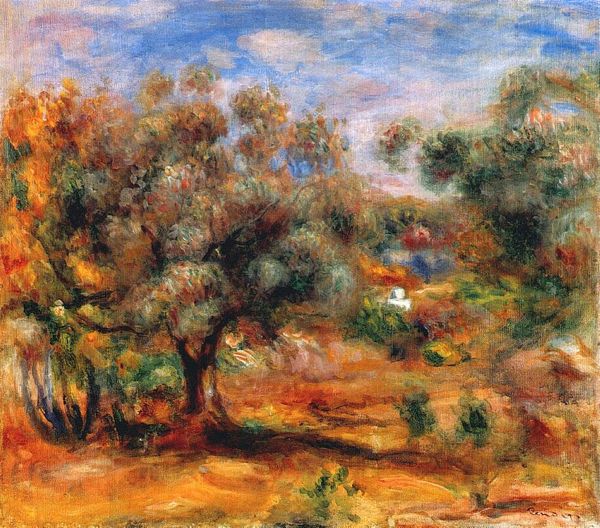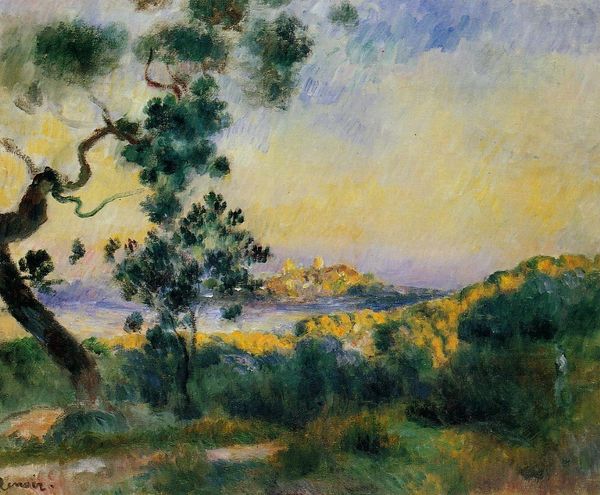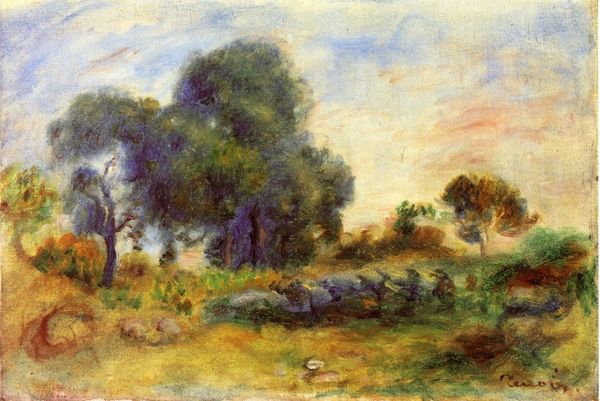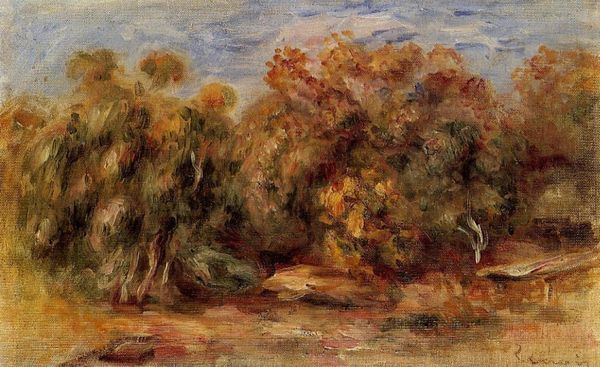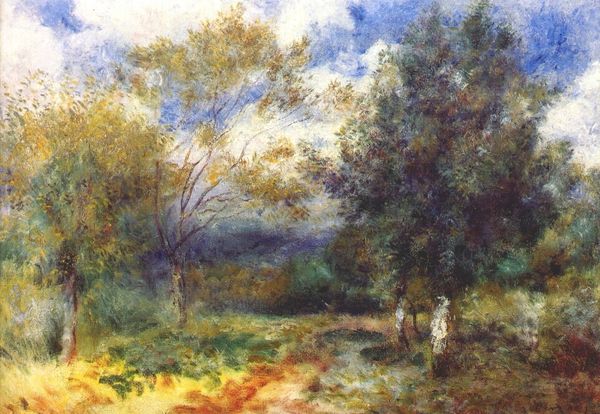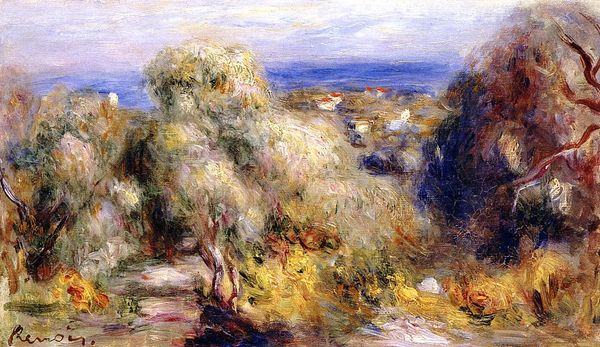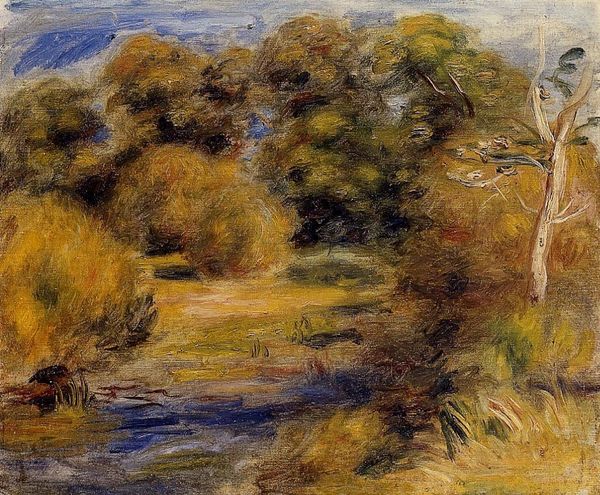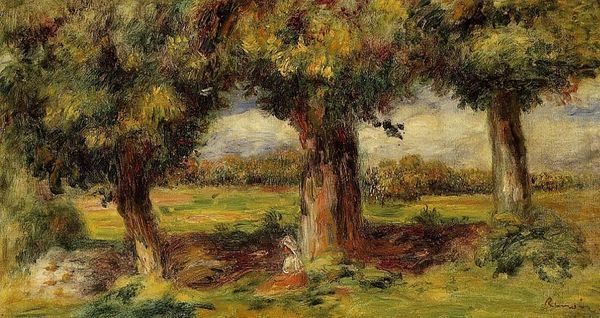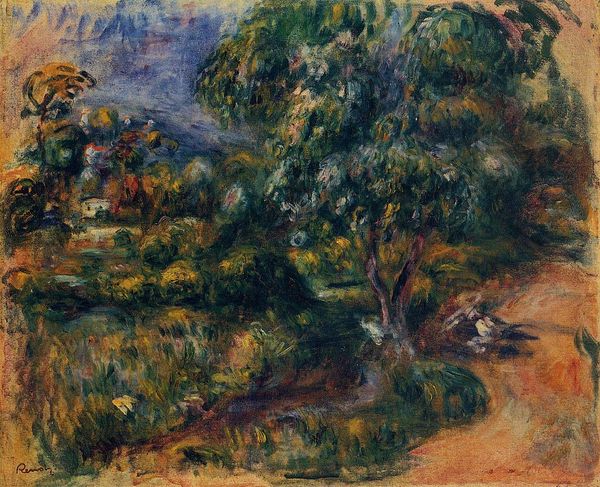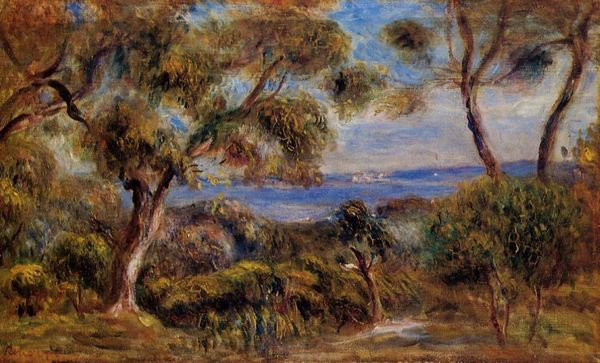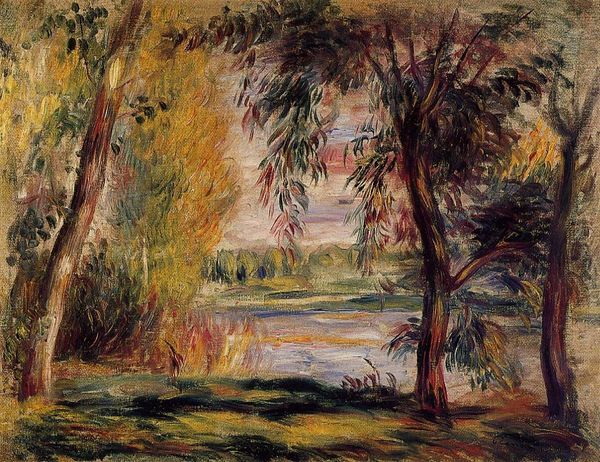
Copyright: Public domain
Curator: Looking at Pierre-Auguste Renoir’s "Landscape near Manton" painted in 1883 using oil paints, one is immediately struck by the shimmering quality of light, especially across the surface of the water. What’s your impression? Editor: There is indeed a quiet stillness, but this serene nature hides the history of landscapes like these on the Côte d'Azur, rapidly transforming due to late 19th-century tourism. Curator: True, yet what commands my attention is the use of broken color, the application of separate touches that allow our eyes to do the mixing, conjuring form from abstract dabs of pigment. Editor: And those dabs and touches reflect the cultural values ascribed to leisure at that historical moment, especially the emerging gender roles of Impressionist paintings and its function in shaping identities during the period. We see the bourgeois embracing "the open air." Curator: Precisely, but the landscape itself isn't secondary, Renoir is equally, if not more, concerned with conveying sensory experience in its own right. The composition draws your eye to the interplay of shadow and light filtered through those leafy trees. Note how he captures nature not with exact replication, but rather a distilled essence. Editor: Except who exactly is being invited to see or access this scene? Who gets to be at leisure? The Impressionists do not just depict leisure but enable and participate in a social sorting. Curator: Perhaps, but can’t we still appreciate this piece on a formal level for how it exemplifies the innovative techniques defining Impressionism? It marks an era of new approaches to representation. The loose brushstrokes, the emphasis on capturing fleeting light – that’s historically significant in the trajectory of painting. Editor: It’s about what gets included and who gets excluded. Whose vision of the world gains prominence, who gets forgotten in those brushstrokes that you say are loose but carry a legacy. It’s all rather revealing if one asks the right questions. Curator: So we both find ourselves, I suppose, acknowledging art’s capacity to communicate beyond the strictly visual. Editor: Right. As the famous saying goes, “beauty is ever solace.” It’s what these depictions enable to see, believe, and feel.
Comments
No comments
Be the first to comment and join the conversation on the ultimate creative platform.
